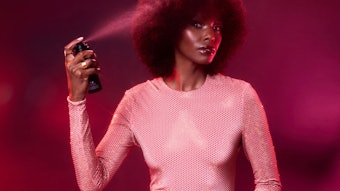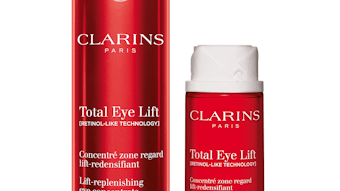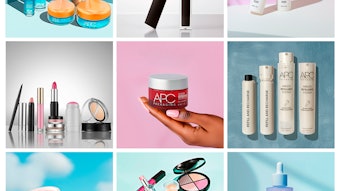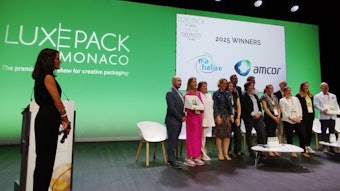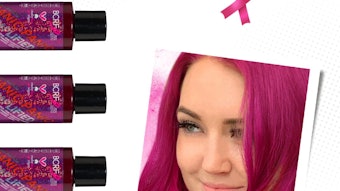- Color cosmetics packaging can show the personality of a brand perhaps more easily than almost any other type of beauty product, with its versatile, changeable shapes, applicators and other elements.
- Color cosmetic packaging needs to be an extension of who the consumer is and how she lives, and it needs to integrate with her lifestyle, as well as communicate the brand story.
- In developing color cosmetic packaging, ask questions such as: How will the consumer interact with the package during the life cycle of the product? And are there any sensorial cues the package must deliver on?
Engaging packaging is typically par for the course for beauty products, but when it comes to the development of quality color cosmetic packaging, the myriad requirements leaves engagement further down the list of musts.
“Generally speaking, hair care and skin care packaging tends to be more simple than the packaging used for color cosmetics,” explains Sandra Hutson, sales and marketing director with Topline Products. “[Packaging for skin and hair care] often consists of only three or four component parts: a bottle or jar (single- or double-walled) and a cap and liner. Color cosmetics packaging, however, tends to be much more complex, using unique shapes with many more parts—including, for example, specific applicators and mirrors and other intricate components.”
Multiple components such as applicators, molded pieces, pans and trays, and mirrors have to come together to work properly and well enough to enhance the usage of the product. Mike Warford, director of sales with ABA Packaging Corp. (which exclusively represents beauty packaging supplier Oeka Beauty in the U.S.), notes, “When we’re looking at mascara and lip gloss, we’re selling much more than we would for a product for hair care. That is, we’re selling performance. Because in a lip gloss and mascara packaging, it’s not only about containment and presentation—it’s more about performance. You can have the best mascara product in the world, but if your brush isn’t copacetic with the formula and if your brush wiper doesn’t work well with the brush, then your product means nothing. It’s much more than containment and presentation. The strong third factor here is performance.”
Additionally, packaging for color cosmetics tends to change more often than packaging for other beauty categories. Damien Dossin, president, HCP Packaging USA Inc., reminds, “Color cosmetic brands tend to launch or upgrade their packaging on a three- to five-year life cycle, whereas skin care or hair care brands sustain their pack designs for longer.”
And each time a new pack is developed, it has to match or better the performance, containment and presentation of previous packaging. “In the prestige beauty market, the package plays the all-important role of setting the first impression,” John Morgan, senior package development engineer for Artistry, the Amway beauty brand with skin care and color cosmetic products, explains. “At Amway, one of packaging R&D’s guiding principles is to design and develop package solutions that communicate the brand image, protect and preserve the product, and delight our customers by delivering a superior experience during the product life. A truly well designed and engineered package incorporates all of these attributes without compromise.”
Package Creation
So how can all these seemingly disparate elements come together to satisfy so many needs for a good color cosmetic pack? Every brand has its own development process, of course, with in-house and partnership options representing different pieces—including packaging suppliers, contract manufacturers, design firms and development houses—that can fit together in all sorts of different ways.
According to Russell Wright, director of brand development with Mary Kay Inc., “When developing packaging for Mary Kay color cosmetic products, we start with the consumer in mind. The packaging needs to be an extension of who she is and how she lives, and it needs to integrate with her lifestyle. This helps us determine basic things such as size, shape and functionality of the package. We strive to understand where the product fits into her life: does it need to fit into her purse, pocket or by the sink? What is the age of the consumer? If older, is a pump easier to use than a twist-off cap? Does she want customization or a pre-prescribed experience that makes application simple? These are a few of the questions we discuss in order to relate the packaging back to the consumers.”
Wright continues, “Next, we study the trends. We send our marketing and creative packaging teams on trend trips twice a year, meeting with the top trend houses like Doneger and Stylesight to understand what’s happening with the most recent runway fashion and accessories. We meet with fragrance and flavor houses to understand how food and fragrance trends are evolving and impacting other beauty categories. And, of course, we meet with our key packaging partners on a regular basis to understand their latest innovations and technologies. As a final step, we look outside of beauty. Inspiration can be found outside of our own industry, from the latest materials and colors in smartphones to the details of the hardware in a vintage train case. We also are looking outside the traditional U.S. and European markets to trends and inspirations from Asia and Latin America.”
Gathering that inspiration and background is important before moving to the next development step. Hutson says, “The process for developing packaging for color cosmetics often starts from a design supplied by the brand. Usually it’s a visual idea of the exterior only: ‘the dream.’ The details of how to turn the dream into a finished product, however, still need to be worked out.”
That is typically where a brand’s supplier partners come into play. Citing the Flickable Luxe Lip Pop product as an example, Hutson describes, “It’s helpful if you have an internal design and engineering department as we do at Topline. We modified the customer’s original concept design to add eye-catching appeal and unique style elements to the package, which also doubled as practical enhancements to make the product easier to use. The cap-skirt that our engineering team added to the design serves as a grip area to make the package easier for the end user to open. And, as well as designing the label graphics for the package, we also collaborated with the brand to create the distinctive look of the display unit.”
Morgan explains Artistry’s approach to color cosmetic package development, saying, “Package development at Amway entails a stage-gate process that is comprised of four different phases: conception, feasibility, verification and execution. In the conception phase the packaging engineer works closely with the marketing and creative teams to establish functional and aesthetic requirements of the package. During this process, the team establishes the desired package attributes from a consumer’s perspective—asking questions such as: How will the consumer interact with the package during the life cycle of the product? Are there any sensorial cues the package must deliver on (i.e. number of clicks to prime a pump, audible click when opening/closing a component)? This process of establishing the design elements is different for each product category.
“Once consensus is reached on package profile, the engineer partners with procurement, quality assurance and a technical regulator to determine appropriate external partners to initiate the feasibility phase. Parameters such as cost, timing and quality requirements are taken into consideration during the supplier selection process. Upon business award, the engineer collaborates with suppliers to ensure the development and verification phase is completed successfully. In the last phase of the project, functions such as engineering, project management, manufacturing and planning all work in concert to ensure production and delivery of the products to our global network of affiliates is completed in a timely fashion.”
Discussing the time line of such development, Dossin says, “The overall development cycle for major new projects requiring bespoke tooling can exceed 18 months, whereas projects based on rebranding our stock components can be less than six months.” So decisions on uniqueness and development costs have to be weighed against material costs and time-to-market concerns.
Brian Robinson, president of TPR Holdings, the parent company for Cargo Cosmetics, talks through Cargo’s recent relaunch, which included the development of new packaging visuals. “As the main component of the brand relaunch, we worked extremely hard on an updated look that debuted with new secondary packaging and the introduction of new SKUs housed in new primary packaging. In doing so, we looked for the perfect balance between Cargo’s iconic tin packaging and ways to bring the brand positioning and personality to life in a fresh and modern way,” he explains. “For our secondary packaging, we drew inspiration from Cargo’s brand heritage of travel and exploration, looking to various global destinations for new landscape illustrations that are featured on the outer cartons. When developing primary packaging, we always look for components that are practical, functional and innovative for consumers, as well as makeup artists. Core products like lipsticks and eyes shadows are housed in sleek aluminum, while the Cargo_HD Collection bares a more professional aesthetic in a soft touch, solid matte black package with the new silver foil logo.
“The packaging needs to communicate our brand story,” Robinson continues. “We want to be accessible yet luxe with elements of prestige, as seen with the custom card stock used to create our outer cartons, crown foil detailing, shade labeling and embossed textures—all of which bring a heightened sensorial experience to the consumer. Primary packaging demonstrates our position in the category—that we are dedicated to introducing best-in-class formulas—while our secondary packaging shows we have a fun, playful side. Our packaging lets our consumer know we are serious but don’t take ourselves too seriously.”
Artistry’s Morgan echoes this sentiment, saying, “Given the competitive nature of the cosmetics industry, having a unique and differentiated brand image is essential in resonating with your target customer. Therefore, it is critical to preserve attributes such as brand logo, design features and brand colors to ensure consistency across product lines once they have been established.”
Color cosmetics can show the personality of a brand perhaps more easily than almost any other type of beauty product, with its versatile, changeable shapes, applicators and other elements. So it’s essential to have a strong, smart idea about what those elements are saying about your brand through their visual aesthetics.
Intersecting Design and Innovation
Bringing your vision to light requires the ability to prioritize and compromise, but also to stay strong about the elements you feel make your packaging—and your product—special. For example, ABA Packaging’s Warford says, “In the area of mascara, we have a large stock line of available brushes that we have already pre-qualified for certain functions. Functions can be lengthening, curling, volume application and so on. We do this qualifying with an internal panel of people that have expertise in mascara. As we come out with products, they do some testing with bulk to see whether or not it’s good for volumizing or good for lengthening or good for curling and such, and we qualify our brushes that way. So at the start of a project for mascara, one of the very important things for us to know from the customer their intention for the product and the package.”
Hutson explains a similar situation, saying, “At Topline, we have created an in-house innovation team responsible for analyzing the market, identifying customer needs, finding solutions and then converting all of this into a workable packaging concept. We work very closely with our customers so that we really understand the market, what the consumer wants and how much she is willing to pay. Innovation is a complex process that frequently involves creating prototypes for product and concept testing.”
HCP also offers similar services for its clients. Dossin explains, “HCP has an internal innovation council. This team includes senior level management who are responsible for identifying new products, materials, finishes and manufacturing opportunities.”
In working in collaboration with companies such as ABA Packaging and Oeka Beauty, brands have the opportunity to benefits from others’ experience. “Let’s say you have a mascara product you want to come out with for volumizing. What we’ll do is ask for some of that product with the necessary non-disclosure agreements, confidential disclosure agreements—whatever’s required—and we’ll have our panel evaluate our mascara brushes with that product,” explains Warford. “Then we’ll come back to the customer with recommendations for brushes or applicators that we think perform well with their product for them to consider.”
It’s important to have the benefits of that experience when working with new ingredients and formulas, too. Hutson says in regard to products such as long-wear formulations for eye shadow and lip color, “These create a whole set of new challenges of their own for packaging manufacturers. You have to choose your packaging materials very carefully to make sure there are no issues with compatibly caused by any of the ingredients in the formula. Also, you have to design the packaging with an airtight seal to prevent the volatile ingredients in the formula from drying out, as these form part of the essential elements to create the product’s long-lasting properties.” And Warford adds, “[Brand owners] are trying to differentiate themselves by innovating new products, and some of those products definitely put strain on existing technology for application. So we are constantly evolving and having to innovate new designs to try to keep up with that need.”
Another aspect to pay attention to is line cohesion. Shapes for color cosmetic products aren’t typically uniform throughout a line, so cohesive elements like color and decoration are needed even more. “There is a strong partnership between our creative packaging, brand positioning and product development teams to ensure we are integrating our shades, the packaging and the brand communication to ensure a holistic experience for the consumer,” says Mary Kay’s Wright. “As an example, our recent fall trend collection used various elements to reinforce our brand positioning of ‘Fairytales and Fantasy.’ The use of a regal purple and an antique bronze leaf-effect in the primary and secondary, coupled with an old English typeface, helped to support the storybook experience. This includes the filigree found on both the carton and collar of our Mulberry Forrest Lip Stain. All of these elements work together to create the experience of an illumination manuscript.”
As Dossin explains, “Product range cohesion is achieved through ensuring that the critical elements of pack profile (shape/aesthetics), color and decoration are specifically complemented at the design stage. Clearly linking these individual elements, at the design stage is critical to the success of a new range.”
Robinson says of Cargo’s packaging, “In order to keep the brand cohesive, our core products always maintain the same look, while our trend products and seasonal collections, palettes and kits allow us to get more creative. The circular aluminum tin has long been iconic for the brand and is typically the first thing that comes to mind when people discuss the brand—so we see that throughout the line. With the next generation of Cargo packaging, we are still going to see circular components but in different ways. We are also using our landscape illustrations to introduce seasonal offerings in a way that is different from one collection to the next yet still cohesive within the larger brand portfolio.”
With so many options in color cosmetics, staying on brand message is always paramount, but it also affords the chance to play with color, shape, finish, decoration and different elements that can attract consumers.
What to Watch
As to the colors, shapes, finishes and decoration that will be hot with consumers in upcoming months and seasons, it’s always changing, but there are some distinct trends on the horizon. “[Consumers and brands] have become more sophisticated and demanding,” says Dossin. “We constantly experience budget or masstige brands seeking to challenge packaging specifications previously only associated with prestige brands. Where innovative or high-technology materials, finishes and decoration techniques were previously only found in the upper tier of the cosmetic market segment, it is now standard practice for these aspects to be specified in the lower-tier or budget end of the market. Transparent, natural and ‘high viz’ bright colors are also increasingly evident as customers seek to gain increased shelf awareness.”
Wright comments on the tech trend too, saying, “Like the technology sector brands, sizing and portability is a hot consumer trend. Products are fitting in smaller packages while maintaining the same positive consumer experience. While mass mascaras have been playing with colorful primary packaging for years, we’re seeing the trend spread to other cosmetic packaging segments. The markets have moved beyond ‘soft touch’ and onto finishes—mixing matte and shine and new metallization looks. And working on limited-edition collections provides an opportunity to continually integrate the latest trends into the overall concept and packaging. This also provides a great vehicle to test both new product forms and packaging.”
Warford offers, “We’re seeing some trends in mascara. A couple years ago the trend was very big brushes, but now we’re seeing more requests for smaller brushes that can accomplish some of the effects that larger brushes did but are less imposing, especially for people with smaller lashes. Those big brushes are great for volumization, but if you have smaller lashes, they’re a little intimidating. We’re also seeing higher inquiries in the area of the eyebrow—brow brushes for brow systems.”
Warford continues, “In lip gloss, it’s about ease of application and an attempt to get as much bulk applied on a single pass or a single dip as possible. Another of the trends with lip gloss—and a number of other products—is that light sensitivity has become a concern for certain products, but yet people still want to see the bulk—they want to see the color of the gloss. We have developed a very innovative product called the 2C-Injection Blow Molded Bottle. We have commercialized this pack that has window lips where you can see the product through the vial. The vial is primarily opaque except for key clear areas where consumers can actually see the color of product, but there remains minimal light infiltration to affect the product.”
And while there is a lot of room for experimentation, there also are traditional ideas to rely on too. “Current cosmetic packaging continues to follow its historic trends. Pack shapes continue to be based in modern variations of round or square profiles,” Dossin says. “Additionally, black continues to be the most popular pack color, although high-technology variations (including metallization, UV color spray, anodization and soft-touch finishing) are used to increase quality perception.”
It’s about seeing what’s out there and developing something that fits your brand yet offers the unexpected. “At Amway, we follow trends in designs and shapes that the suppliers introduce to their stock portfolio of packaging,” says Morgan. “We are always looking for packages that feature new dispensing features or enhancement to the consumer. Innovation in the areas of new materials and decoration methods are of particular interest, as they give us the opportunity to customize the packaging to achieve the desired branding. This highly customizable segment is very conducive to creativity and limitless possibilities, which make it very fun and exciting to work on.”
